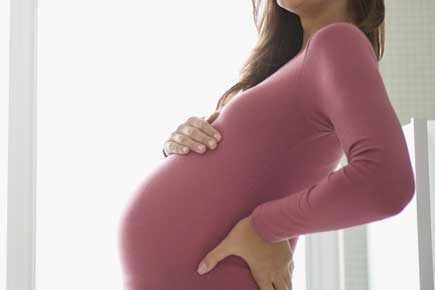Researchers conducted a study using information on all women in Canada (excluding Quebec) who had a previous cesarean delivery and subsequently delivered between 2003 and 2015


ADVERTISEMENT
Representational picture
Washington D.C.: The question - is vaginal birth risky after having a cesarean in the previous pregnancy - has been plaguing mother's mind for a long time. Scientists from the University of Alberta, along with researchers from various other institutions, decided to explore the question and its probable answers. It was found that attempted vaginal birth after cesarean (VBAC) is associated with higher rates of adverse effects or death for mothers and infants.
Although absolute rates were low in mothers who attempted this type of birth.
"The absolute rates of adverse maternal and neonatal outcomes are low with both attempted VBAC and elective repeat cesarean delivery," said researcher Carmen Young. "Both are reasonable options for women in general; however, attempted VBAC continues to be associated with higher relative rates of severe adverse maternal and neonatal outcomes compared with an elective repeat cesarean delivery."
For women who have had a single previous cesarean section, the best mode of delivery in a later pregnancy is controversial, as there are risks and benefits to attempting a VBAC or having an elective repeat cesarean section.
Attempted VBAC is associated with a higher risk of uterine rupture, haemorrhage and other maternal and infant complications. Repeat cesarean sections are associated with an increased risk of surgical complications and placental complications in subsequent pregnancies. It is also difficult to predict which patients will have a successful VBAC.
Planning mode of delivery for women with a previous cesarean delivery is, therefore, challenging for both the patient and her care provider.
Researchers conducted a study using information on all women in Canada (excluding Quebec) who had a previous cesarean delivery and subsequently delivered between 2003 and 2015.
The study found that although the number of women with a previous cesarean delivery increased from 2003 to 2014, rates of attempted VBAC and success rates after attempting labour were essentially unchanged.
"This topic is an important issue because rates of cesarean section continue to rise and the most common single indication for a cesarean delivery is a prior cesarean delivery," said Young. "Once a woman has had two cesarean deliveries, she is very unlikely to have a subsequent vaginal delivery due to high maternal and neonatal risks associated with labour."
The authors also found that infant, but not maternal, outcomes, have worsened between 2003 and 2015 after attempted VBAC.
The study highlighted the importance of appropriate patient selection for attempting VBAC and careful monitoring of labour and delivery to optimize safety for these women and their infants.
"For women who may be candidates for an attempted VBAC, the choice between an elective repeat cesarean delivery and an attempted VBAC depends on the woman's desire for a vaginal delivery, her tolerance for risk and whether she is planning a small or large family," says Young.
The study appears in the Canadian Medical Association Journal.
Catch up on all the latest Crime, National, International and Hatke news here. Also download the new mid-day Android and iOS apps to get latest updates
This story has been sourced from a third party syndicated feed, agencies. Mid-day accepts no responsibility or liability for its dependability, trustworthiness, reliability and data of the text. Mid-day management/mid-day.com reserves the sole right to alter, delete or remove (without notice) the content in its absolute discretion for any reason whatsoever
 Subscribe today by clicking the link and stay updated with the latest news!" Click here!
Subscribe today by clicking the link and stay updated with the latest news!" Click here!






